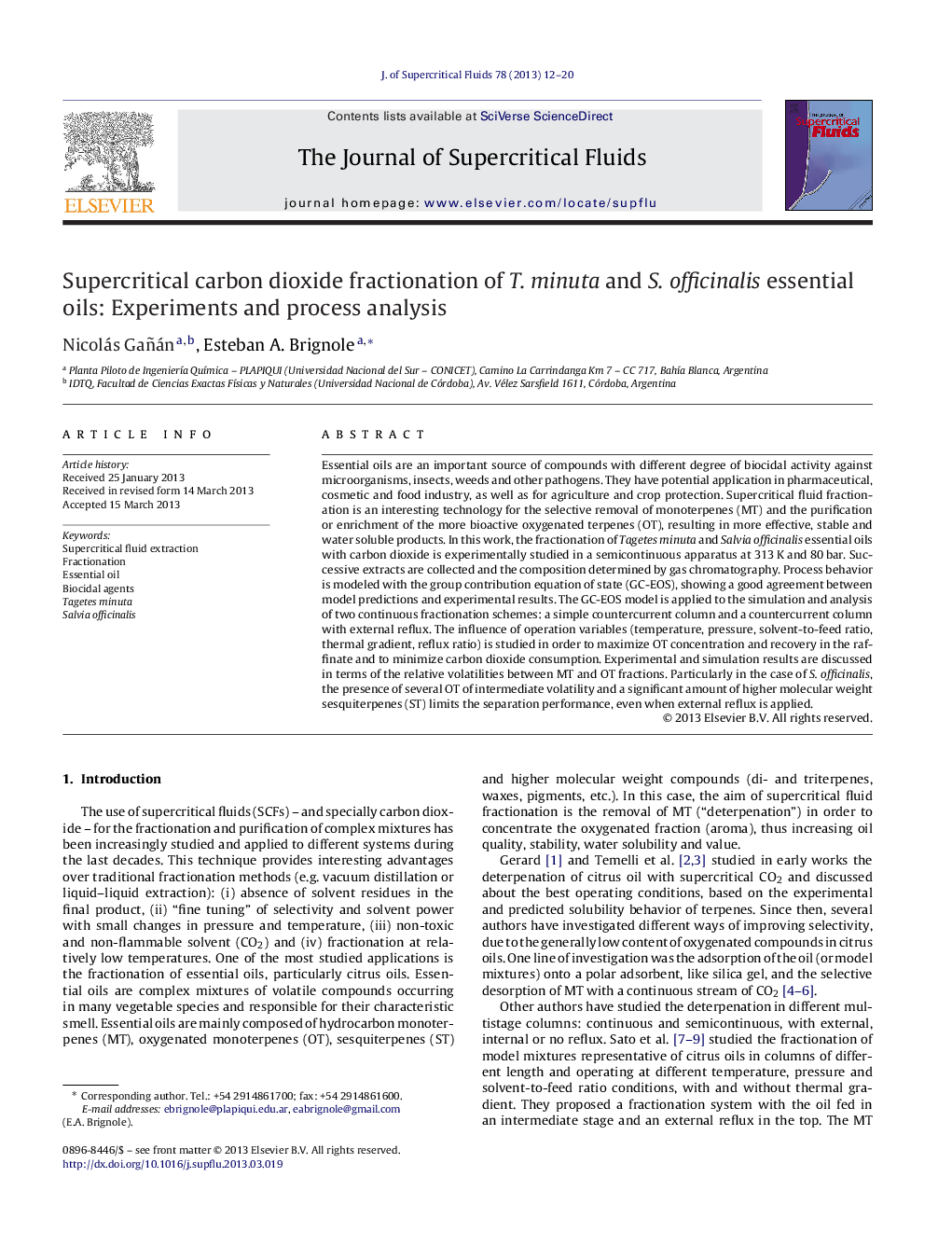| کد مقاله | کد نشریه | سال انتشار | مقاله انگلیسی | نسخه تمام متن |
|---|---|---|---|---|
| 230795 | 1427399 | 2013 | 9 صفحه PDF | دانلود رایگان |

• Concentration of oxygenated fractions of bioactive essential oils is obtained by semicontinuous experiments.
• Simulation of semicontinuous experiments follows closely the experimental results and confirms the thermodynamic model predictions.
• Recommended extraction conditions are obtained from rigorous modeling of continuous countercurrent multistage columns, with and without external reflux.
• Operation at 323 K, 90 bar and 60–80 kg solvent/kg feed achieves high OT concentration and recovery.
Essential oils are an important source of compounds with different degree of biocidal activity against microorganisms, insects, weeds and other pathogens. They have potential application in pharmaceutical, cosmetic and food industry, as well as for agriculture and crop protection. Supercritical fluid fractionation is an interesting technology for the selective removal of monoterpenes (MT) and the purification or enrichment of the more bioactive oxygenated terpenes (OT), resulting in more effective, stable and water soluble products. In this work, the fractionation of Tagetes minuta and Salvia officinalis essential oils with carbon dioxide is experimentally studied in a semicontinuous apparatus at 313 K and 80 bar. Successive extracts are collected and the composition determined by gas chromatography. Process behavior is modeled with the group contribution equation of state (GC-EOS), showing a good agreement between model predictions and experimental results. The GC-EOS model is applied to the simulation and analysis of two continuous fractionation schemes: a simple countercurrent column and a countercurrent column with external reflux. The influence of operation variables (temperature, pressure, solvent-to-feed ratio, thermal gradient, reflux ratio) is studied in order to maximize OT concentration and recovery in the raffinate and to minimize carbon dioxide consumption. Experimental and simulation results are discussed in terms of the relative volatilities between MT and OT fractions. Particularly in the case of S. officinalis, the presence of several OT of intermediate volatility and a significant amount of higher molecular weight sesquiterpenes (ST) limits the separation performance, even when external reflux is applied.
Figure optionsDownload as PowerPoint slide
Journal: The Journal of Supercritical Fluids - Volume 78, June 2013, Pages 12–20